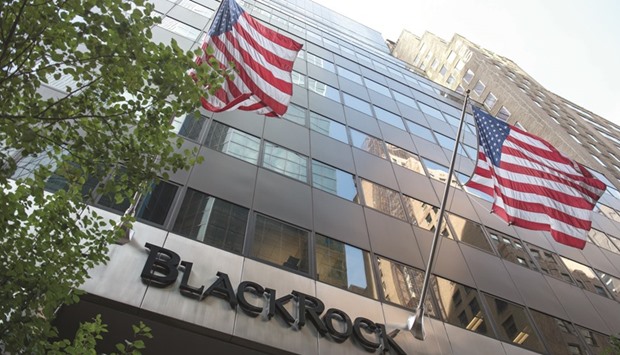The world’s biggest money manager just went bearish on short-term Treasuries.
BlackRock cut its view on US debt to underweight from neutral, meaning it recommends less than benchmark exposure, according to a Friday note from its chief fixed-income strategist, Jeffrey Rosenberg.
Traders have “gone too far” in discounting the chances the Federal Reserve will raise rates this year, he wrote. He focused his call on debt maturing between one and three years, which is more sensitive to the Fed outlook than longer-term securities.
The market may be pricing in too slow a policy-tightening pace, Rosenberg said. The odds derivatives traders assign another rate increase by the end of this year are little more than a coin flip.
At the end of last year, they saw more than a 90% chance. Yet global economic conditions appear more stable, he said, and hints of US growth showed up Friday in the strongest reports on retail sales and consumer confidence in a year.
“There’s very little cushion, in terms of market pricing,” if the Fed hints at raising rates more quickly than traders expect, Rosenberg said by phone. “There’s a lot more downside right now than upside.”
The two-year Treasury yield rose one basis point, or 0.01 percentage point, to 0.75% last week, according to Bloomberg Bond Trader data. The price of the 0.75% note due April 2018 was 100.
Ten-year Treasury yields declined for a third consecutive week, falling eight basis points to 1.70%.
The gap between two- and 10-year note yields, known as the yield curve, flattened to the narrowest on a closing basis since 2007.
Rosenberg still doesn’t think the Fed will raise rates quickly this year, a view shared by others at BlackRock.
Rick Rieder, chief investment officer of global fixed income, wrote in a Friday blog post that the central bank may have “missed the window of opportunity” to raise rates in a way that doesn’t slow the economic recovery.
That’s the result of slowing momentum in Fed Chair Janet Yellen’s preferred economic growth indicators, according Rieder.
BlackRock says its “Yellen Index” - which includes metrics like US hire and quit rates, long-term unemployment, and gross domestic product growth - shows the Fed had an opening to begin raising rates in mid-2014.
Even so, the market-implied tightening pace is too slow, according to the money manager.
The next interest-rate increase isn’t fully priced in until mid-2017, according to futures data compiled by Bloomberg.
If the data continue to improve, Federal Open Market Committee officials may start to talk more about tightening, which could spark losses in short-term debt, Rosenberg said.
He cited a May 19 speech by New York Fed President William Dudley as a potential risk.
“All it takes is basically one or two words from a significant FOMC participant,” he said. “There’s going to be a lot of market attention on that.”

The BlackRock logo is displayed at the company’s offices in New York. The world’s biggest money manager cut its view on US debt to underweight from neutral, meaning it recommends less than benchmark exposure.


